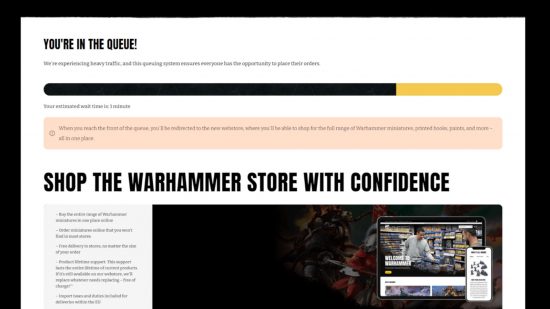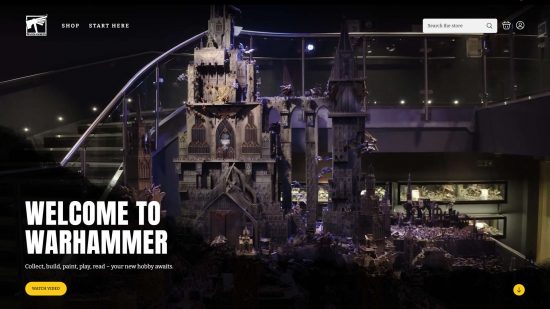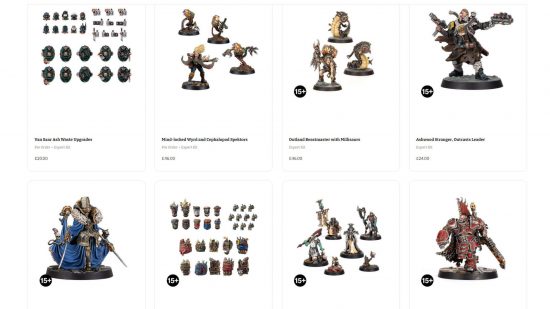After years spent relying on an increasingly outdated e-retail platform, Games Workshop has finally replaced the Warhammer.com webstore with something shiny and new. While a new Games Workshop webstore is probably the driest news we could possibly cover at Wargamer, it has far-reaching ramifications for the growth of the hobby.
At time of writing (9am PT / 12 noon ET / 4pm GMT on October 30), a queuing system is in effect for customers attempting to check out the new sales portal for Warhammer 40,000. Whether that reflects difficulties Games Workshop is facing in bringing new servers online, or a sudden surge in demand for the site, isn’t clear. It could well be a spike in interest – fans don’t need much provocation to spend money on their favorite Warhammer 40k faction.
Queuing certainly isn’t new on the Games Workshop webstore, either. Interest in the Warhammer hobby has been on the rise since 2016, an effect that was turbo-charged by the Coronavirus pandemic and the sudden demand for stay-at-home hobbies like painting miniatures. While this surge in interest buoyed Games Workshop’s share price and profitability to new heights, there were growing pains, with webstore queues and even crashes among them – usually triggered by shiny new model releases.
Problems fulfilling customer demand have also plagued the retailer. The most infamous incident was the day-one sellout of the highly anticipated Warhammer Quest: Cursed City boxed set in 2021, which generated massive buzz prior to launch and then disappeared from the face of the earth for over a year.
It’s not just direct customers who have been affected – in 2023, independent Warhammer retailers complained that Games Workshop was unable to deliver hotly anticipated products in time for important release-weekend sales windows.
These challenges are symptoms of an underlying problem – aging IT infrastructure. In the firm’s 2022-23 half-year report, CEO Kevin Rowntree notes that “our IT systems and infrastructure [must] adapt and scale with the business as we grow – they’re currently holding us back”.
Projects facing the then newly-appointed Head of Global IT included overhauling the website – which at the time had already swallowed $6 million – and completing IT integration for a new warehousing and fulfilment facility. Though the new website launches a few months after an estimated launch window of Summer 2023, demonstrates that the firm is making progress on at least some of its IT issues.
Another sign that the changes to online sales go beyond a new lick of paint is the integration of two subsidiary GW brands into the main store. Black Library publishes licensed Warhammer 40k books, while Forge World manufactures expensive resin models, including the enormous $1,000+ Warhammer Titan models. Both ranges are now available via Warhammer.com.
Of particular interest to global Warhammer fans is the new option to order Forge World miniatures for collection from any Warhammer store globally, paying a customs charge but no shipping. Offering Forgeworld miniatures via Games Workshop’s retail distribution network is a long-overdue rationalisation that customers have demanded.
It remains to be seen how effectively the firm has braided its sales and inventory systems across these brands – but an uptick in sales seems likely in any case, as customers have easier access to a wider range of products connected to their corner of the hobby.
If you’d like to know about another Games Workshop digital platform badly in need of an overhaul, check out our guide to the Warhammer Plus premium subscription service. If you happen to be a financial investor who’s a little puzzled that customers are spending so much money on toy soldiers, check out our ‘What Is Warhammer 40k?’ guide to get a better picture of where the cash is going.
Source: Wargamer






